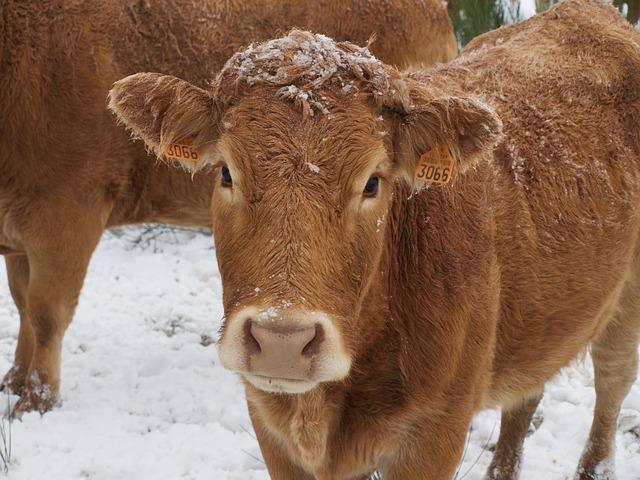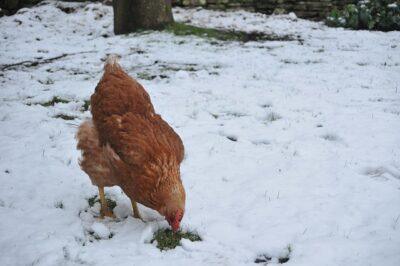Watering animals in the winter can be a huge headache for both small-scale homesteaders and large-scale farmers, especially if you’re off-grid. Certain animals, like dairy cows, need lots of water to keep up production. Producing 10-plus gallons of milk per day means they have to drink a lot more than 10 gallons of water. At the same time, water can be dangerous and create slippery conditions for animals that are prone to climb in and spill their buckets.
The most common tactic used by livestock owners is to try and keep water from freezing. This can be more daunting than you realize. Commercial farms water their animals in centralized tanks that can be heated electrically. However, that may not be an option for a small-scale or off-grid homesteader. Propane heaters are one potentially good, automatic off-grid option. Unfortunately, they can be dangerous if the pilot light goes out or if they are not adequately protected from the animals themselves. A number of other options are listed here.
Diatomaceous Earth: The All-Natural Livestock De-Wormer!
But there are a few low-tech ways to keep the water from freezing without a big investment.
1. Hauling warm water
For some animals, the best way to ensure they have water is to haul in fresh water every single day. Chickens and rabbits are small and require relatively little water per day. They can easily be managed off-grid by bringing them fresh water daily. For larger animals, you’ll want to employ one of the low-tech strategies below to keep the water fresh longer. Which means, that you’ll only have to water them every few days or only need to provide a small amount of water each day, saving a lot of labor and time.
2. Raised water platforms
The cold ground robs heat from water buckets placed directly upon it. Raising your watering station even a few inches off the ground can keep it from freezing in milder weather. Try a suspended water system for chickens. Or perhaps a bucket latched to the barn wall for larger animals such as pigs. Even a few inches can make a big difference.
3. Watering animals indoors
By watering the animals indoors, even in an unheated structure, the protection from the elements will keep the water in a liquid state much longer. Insulating both the structure and the water tank will further delay the water’s freezing. This may mean that you only need to bring fresh liquid water every few days.
4. Passive compost heating
The water also can be passively heated with the use of active compost. Place a water trough near a corner of the structure, and then each time the pen is cleaned, toss manure behind and around the trough to keep the water insulated with the manure — and perhaps even heated if the manure is in the right balance to make it hot. Remember to keep a clean path to the water by only piling on three sides of the trough.
5. Watering in feed
For animals like pigs and chickens, wetting down their food into a warm mash is a great way to prevent dehydration on an otherwise dry ration, and to help reduce feed waste, as well. Pig feed crumbles and much of it can be lost to dust if it’s not wet into a slurry. Adding a bucket of hot water to the feed will encourage the animals to consume all the feed while keeping them hydrated. But they can’t get quite all the water they need in feed, so making sure they have a good supply of liquid water (or snow if appropriate) is still important.
6. Watering animals with snow
Knowing that deer survive all winter outdoors without a liquid water source can help encourage you to provide snow to your animals to supplement their water supply. As long as there is ample fresh snow that hasn’t been packed down into ice or covered with excrement, many animals, including horses and ducks, can do quite well. Fussy animals, such as chickens may refuse to eat snow, even to the point of dying of dehydration before leaving the warmth of their coop. You’ll need to evaluate on a case-by-case basis based on the temperament and breed of your animals. Even if they readily eat snow, it’s still a good idea to bring them a small bucket of warm water daily to make sure they’re staying well-hydrated. Dairy animals producing a significant amount of extra liquid in the form of milk will still require daily supplementation with a large supply of water.
When Not to Water
Believe it or not, there are some animals that should not be watered when temperatures are below freezing. Ducks and geese love fresh water, but they use it more for bathing than drinking. No matter how small the outlet, ducks may thrash against it to create a puddle to bathe in. This will satisfy them temporarily, but if the temperatures are more than just a few degrees below freezing, they’re likely to create an ice slick. Basically gluing themselves to the ground by their chest feathers and feet. Once they realize their predicament, they’ll thrash and injure themselves, often mortally. To avoid these risks, only provide fresh water to water fowl on days when the temps are above freezing. Otherwise, make sure they have an ample supply of fresh snow, even if it means shoveling it in from outside of their yard.
Do you have any other tips that work well for you? Please share in the comments below.




























